Novel Second-Order Derivative-Based Filters for Edge and Ridge/Valley Detection in Geophysical Data
Abstract
:1. Introduction
2. Materials and Methods
3. Results
Application to Gravity and Magnetic Data from South Africa
4. Conclusions
Funding
Data Availability Statement
Acknowledgments
Conflicts of Interest
References
- Cawthorn, R.G.; Cooper, G.R.J.; Webb, S.J. Connectivity between the Eastern and Western limbs of the Bushveld complex. S. Afr. J. Geol. 1998, 101, 291–298. [Google Scholar] [CrossRef]
- Eales, H.V. A First Introduction to the Geology of the Bushveld Complex and Those Aspects of Geology That Relate to It; Council for Geoscience: Pretoria, South Africa, 2001; 84p. [Google Scholar]
- Frimmel, H.E.; Groves, D.I.; Kirk, J.; Ruiz, J.; Chesley, J.; Minter, W.E.L. The formation and preservation of the Witwatersrand goldfields, the world’s largest gold province. Econ. Geol. 2005, 100, 1051–1052. [Google Scholar] [CrossRef]
- Nabighian, M.N. Toward a three-dimensional automatic interpretation of potential field data via generalized Hilbert trans-forms: Fundamental relations. Geophysics 1984, 49, 957–966. [Google Scholar] [CrossRef]
- Miller, H.G.; Singh, V. Potential field tilt—A new concept for location of potential field sources. J. Appl. Geophys. 1994, 32, 213–217. [Google Scholar] [CrossRef]
- Roberts, A. Curvature attributes and their applications to 3D interpreted horizons. First Break 2001, 19, 85–100. [Google Scholar] [CrossRef]
- Cooper, G.R.J. Processing Potential Field Data in the Amplitude/Phase Domain. Geophys. Prospect. 2019, 67, 455–464. [Google Scholar] [CrossRef]
- Gonzalez, R.C.; Woods, R.E. Digital Image Processing, 3rd ed.; Prentice Hall: Upper Saddle River, NJ, USA, 2007; p. 187. [Google Scholar]
- Cooper, G.R.J. Amplitude-Balanced Edge Detection Filters for Potential Field Data. Explor. Geophys. 2023, in press. [CrossRef]
- Starck, J.L.; Murtagh, F. Astronomical Image and Data Analysis; Springer: Berlin, Germany, 2006; p. 18. ISBN 3-540-42885-2. [Google Scholar]
- Gibson, R.L.; Reimold, W.U. The significance of the Vredefort Dome for the thermal and structural evolution of the Witwa-tersrand Basin, South Africa. Mineral. Petrol. 1999, 66, 5–23. [Google Scholar] [CrossRef]
- Buchmann, J.P. Exploration of a geophysical anomaly at Trompsburg, Orange Free State, South Africa. Trans. Geol. Soc. S. Afr. 1960, 63, 1–10. [Google Scholar]
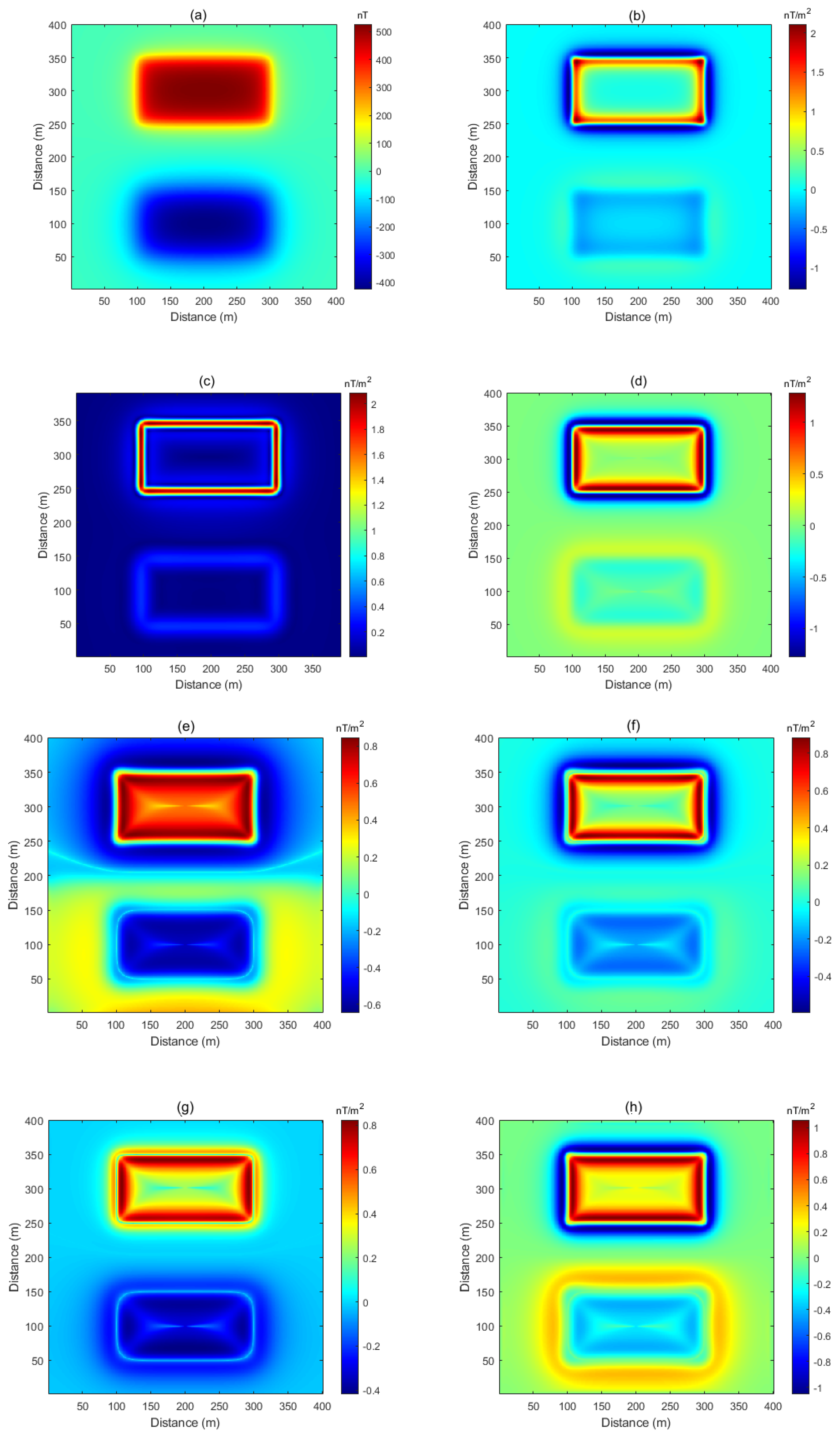
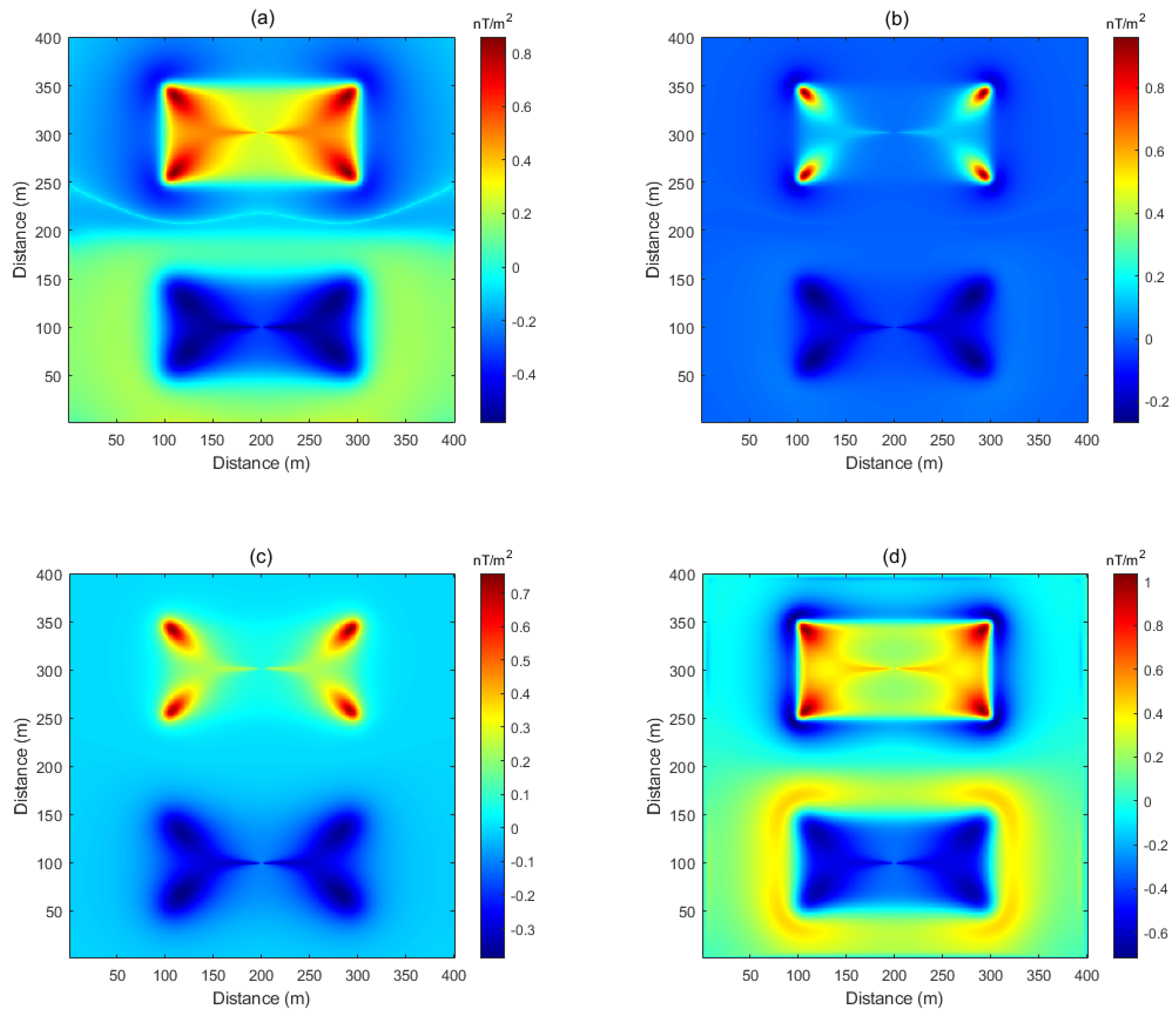
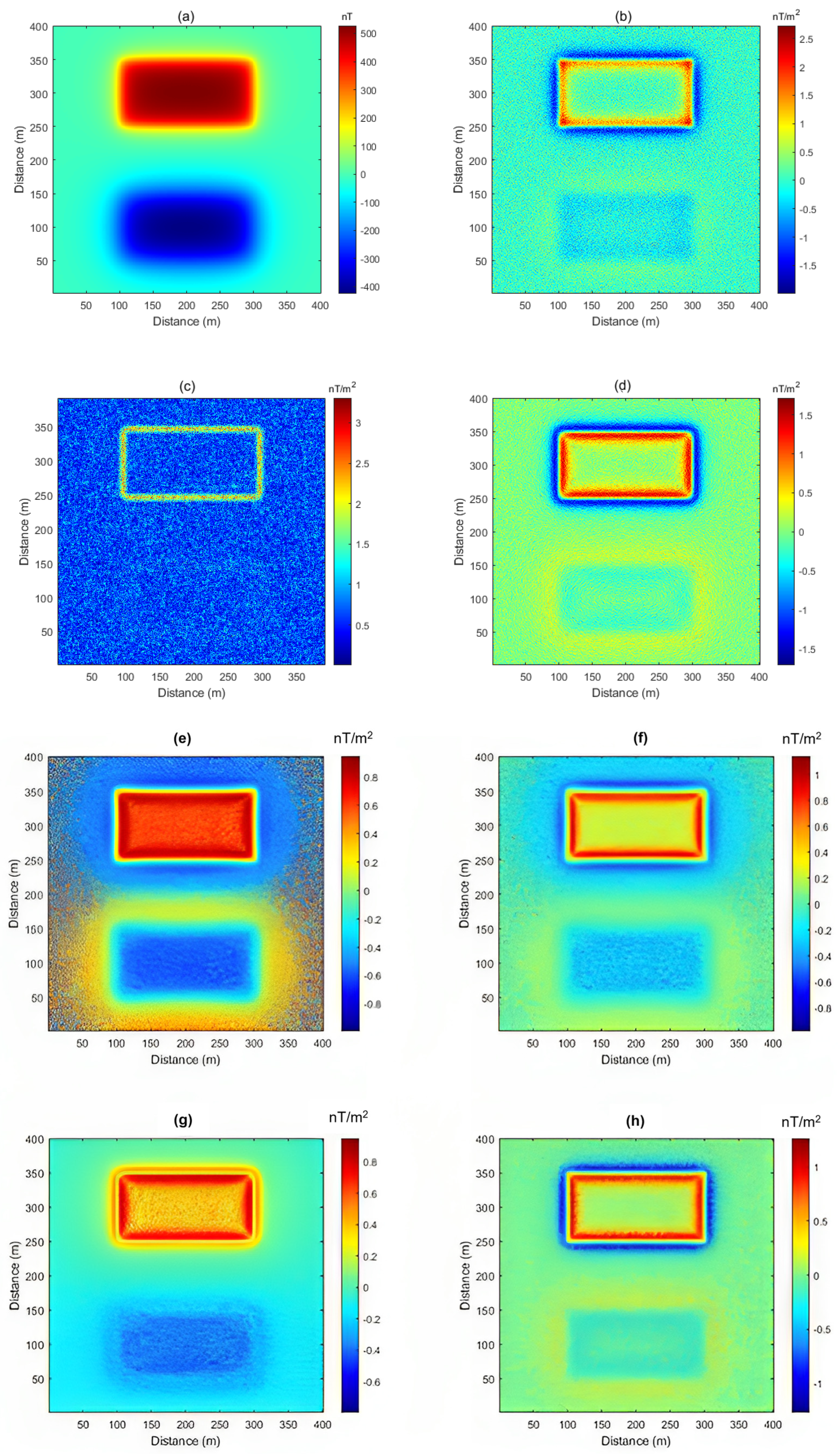
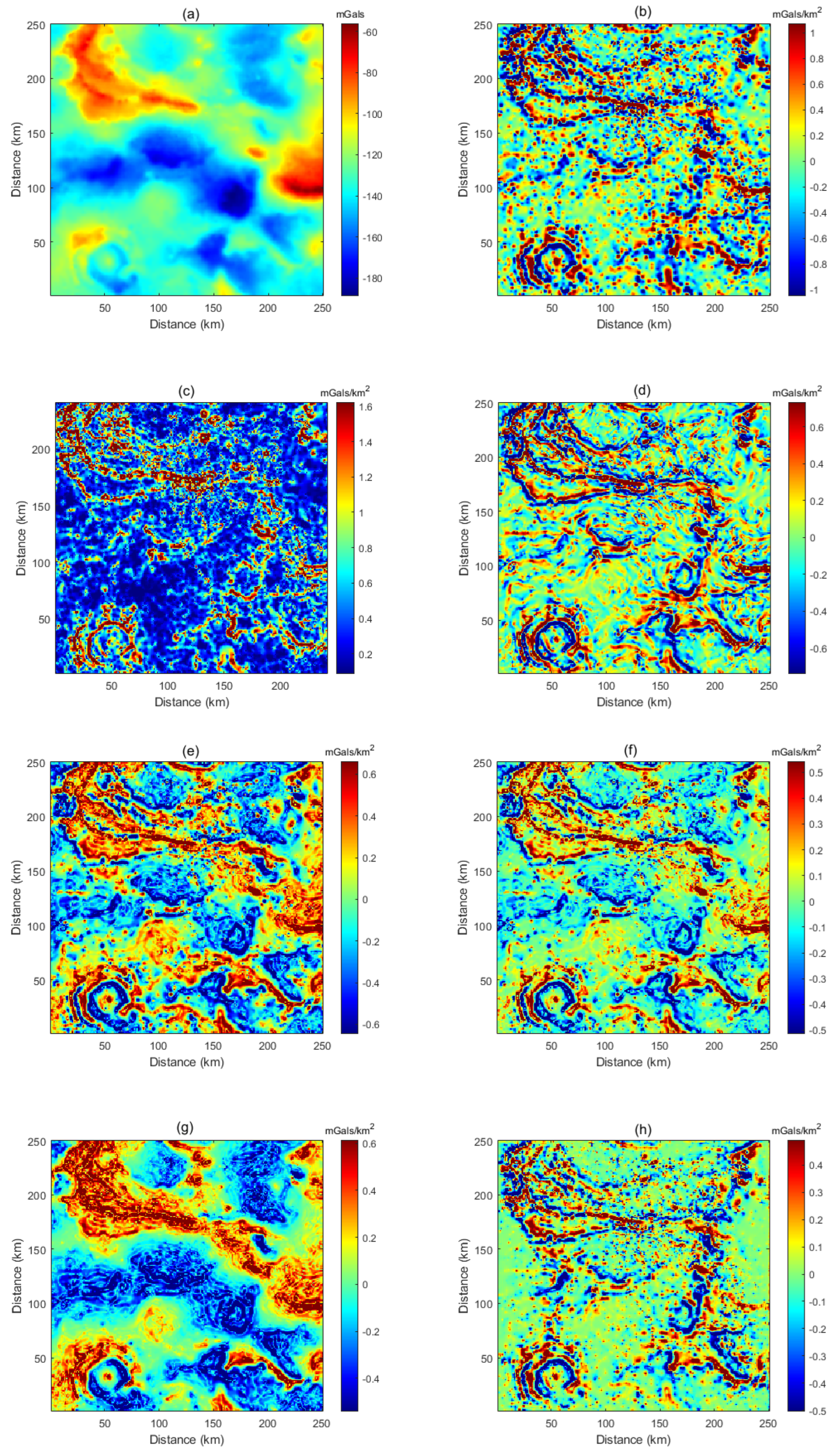
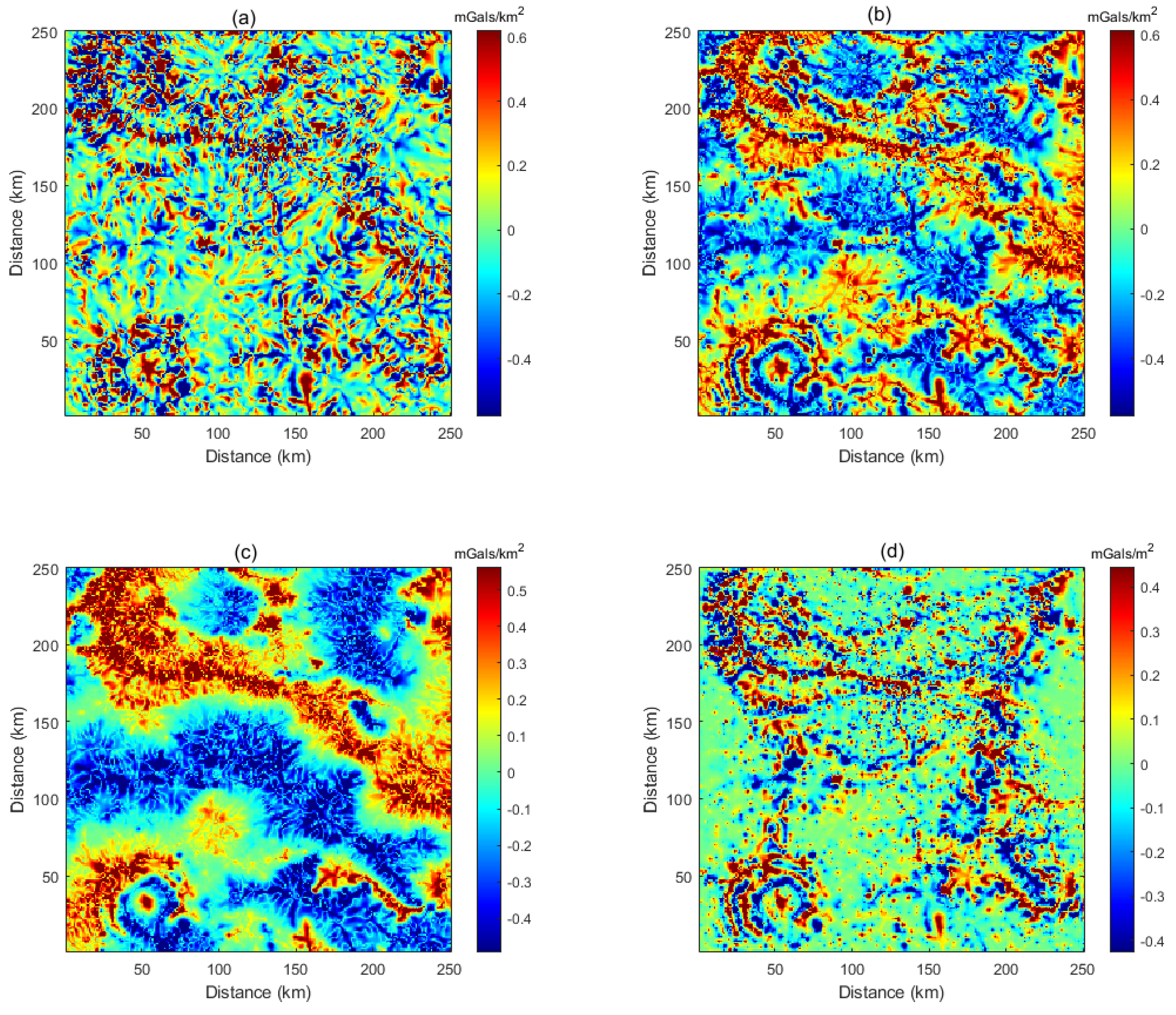

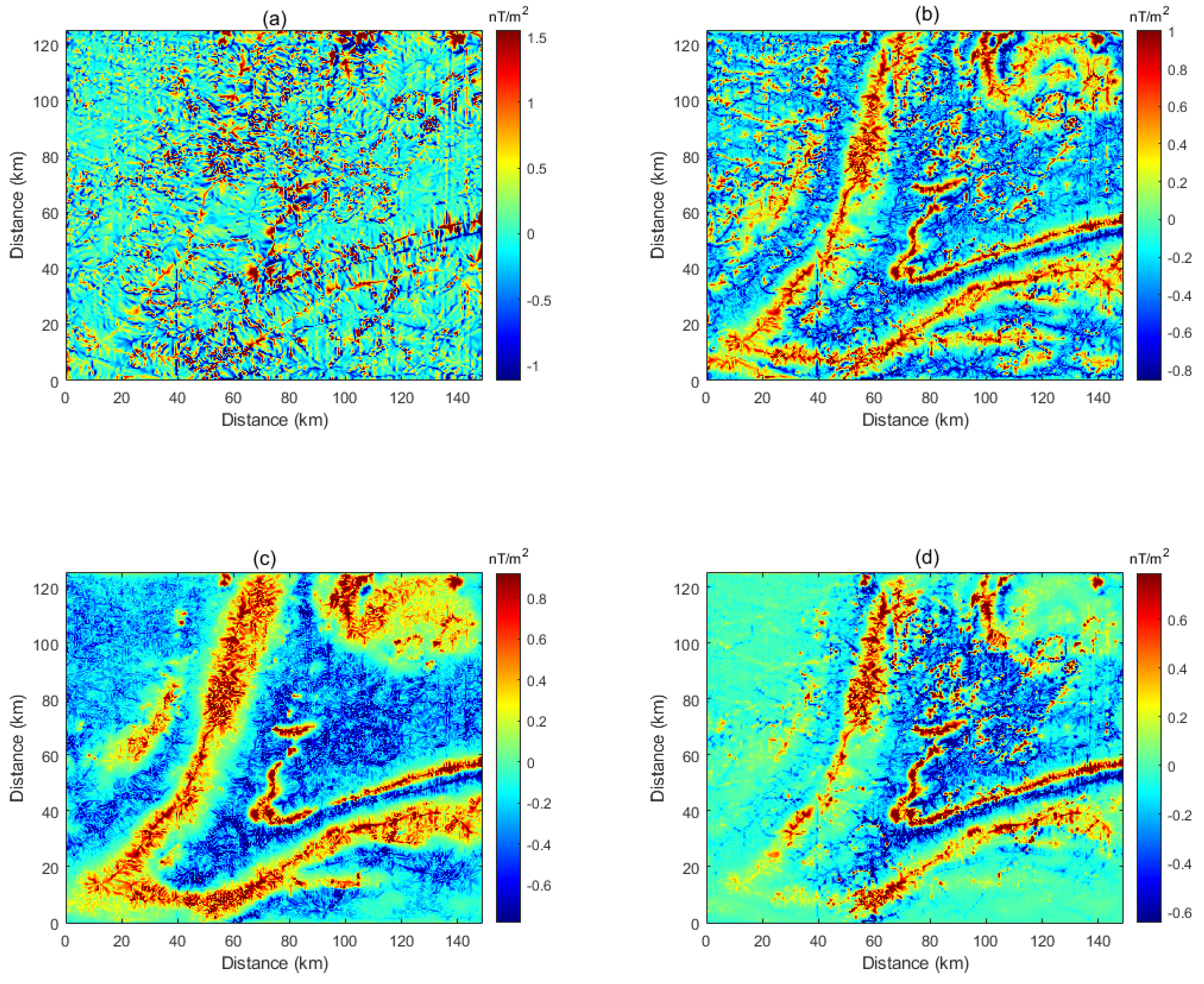
Disclaimer/Publisher’s Note: The statements, opinions and data contained in all publications are solely those of the individual author(s) and contributor(s) and not of MDPI and/or the editor(s). MDPI and/or the editor(s) disclaim responsibility for any injury to people or property resulting from any ideas, methods, instructions or products referred to in the content. |
© 2023 by the author. Licensee MDPI, Basel, Switzerland. This article is an open access article distributed under the terms and conditions of the Creative Commons Attribution (CC BY) license (https://creativecommons.org/licenses/by/4.0/).
Share and Cite
Cooper, G.R.J. Novel Second-Order Derivative-Based Filters for Edge and Ridge/Valley Detection in Geophysical Data. Minerals 2023, 13, 1229. https://doi.org/10.3390/min13091229
Cooper GRJ. Novel Second-Order Derivative-Based Filters for Edge and Ridge/Valley Detection in Geophysical Data. Minerals. 2023; 13(9):1229. https://doi.org/10.3390/min13091229
Chicago/Turabian StyleCooper, Gordon Robert John. 2023. "Novel Second-Order Derivative-Based Filters for Edge and Ridge/Valley Detection in Geophysical Data" Minerals 13, no. 9: 1229. https://doi.org/10.3390/min13091229
APA StyleCooper, G. R. J. (2023). Novel Second-Order Derivative-Based Filters for Edge and Ridge/Valley Detection in Geophysical Data. Minerals, 13(9), 1229. https://doi.org/10.3390/min13091229





